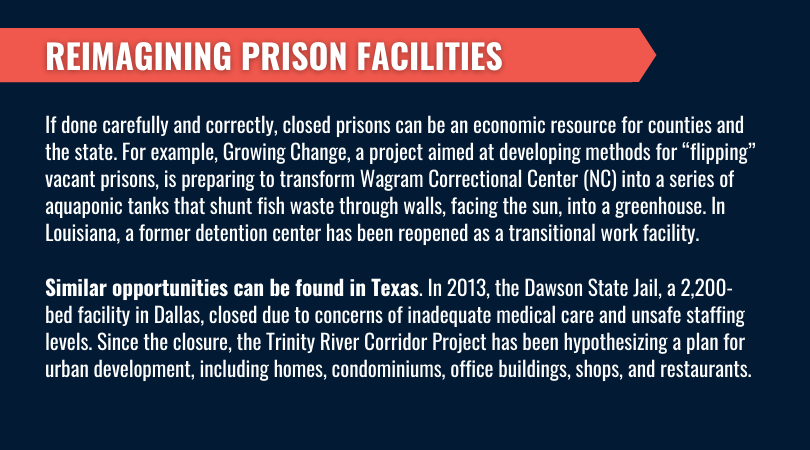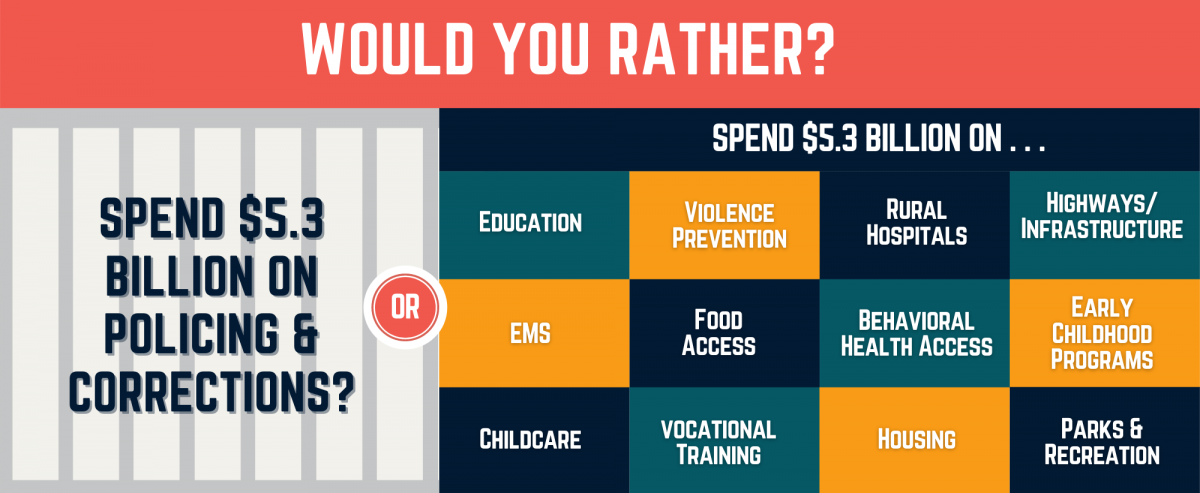Policy Background
As of August 2020, there were 124,181 people incarcerated in Texas prisons,1 following a recent population drop of approximately 16,000 people due to rapidly declining crime rates and decreased felony court activity due to the COVID-19 emergency declaration.2 While this reduction seems promising — and is saving taxpayer dollars3 — it is likely the numbers will rise again once the pandemic subsides.
We do not want to return to past numbers — where approximately 891 of every 100,000 Texans were incarcerated (even as recently as 2018). This rate of incarceration eclipsed the national incarceration rate by 27 percent and dwarfed many other NATO-member countries.4
One of the best ways for the state to ensure real public safety for all Texans — while reducing the overall prison population for good — is to continue closing prison facilities and to invest the savings into crime prevention and community resources. Crime prevention specifically includes items like substance use and mental health treatment, housing and employment assistance, and trauma recovery centers.

Facility closure is especially relevant for aging and under-staffed prison units still in operation in Texas. Unless the system is downsized, Texas will be forced to increase funding every year to maintain its 100+ units, many of which are more than a century old.5
Furthermore, closing outdated or under-staffed facilities in areas with high economic growth could create significant savings for the state. For instance, closing a unit built before the 1920s could save the state tens of millions of dollars.
Texas spent $5.3 billion on criminal justice in 2018, including policing and corrections. This is an increase of 85% in state funding for criminal justice since 1998 and an increase of almost 20% since 2012.
The 20% increase is almost equal to the 22% TOTAL increase in funding for education, public welfare, hospitals, health, highways, AND parks and recreation during the same time period.
Proposed Solution
Since 2007, Texas has saved a total of three billion in taxpayer dollars as a result of reforms that have decreased prison populations and led to prison closures.6 To maintain this progress, Texas leadership should:
1. Continue closing prisons.
2. Use savings to stave off cuts to critical public health services.
3. Invest in crime prevention and community resources.

Learn more about facility closure and community reinvestment in a video created by one of TCJE's Policy Associates!
In light of Texas’ projected budget crisis, TCJE developed 7 cost-saving solutions. Learn more about our ”Spend Your Values, Cut Your Losses" campaign here, and read the full portfolio of solutions here.
1 Legislative Budget Board, Monthly Tracking of Adult Correctional Population Indicators, August 2020.
2 Data obtained through the Office of Court Administration Court Activity Database. Monthly commitments to TDCJ declined by more than 16,000 during the period between March and August compared to the six-month period prior to the COVID-19 emergency declaration.
3 Legislative Budget Board, Criminal and Juvenile Justice Uniform Cost Report: Fiscal Years 2017 and 2018, January 2019, 4. Calculated by multiplying 16,000 people by $62.65 [Statewide Cost per day], for a total of $996,000 per day. These savings do not account for ongoing overhead costs that TDCJ will continue to spend.
4 Prison Policy Initiative, Texas Profile.
5 Century-old units include: Clemens (built in 1893), Darrington (1917), Eastham (1917), Goree (1907), Huntsville (1849), Ramsey (1908), Scott (1919), Stringfellow (1908), Vance (1885), and Wynne (1883).
6 Mark Holden and Brooke Rollins, “Commentary: Texas Saved $3B Closing Prisons. Why Rehabilitation Works,” Statesman.com, September 25, 2018.

